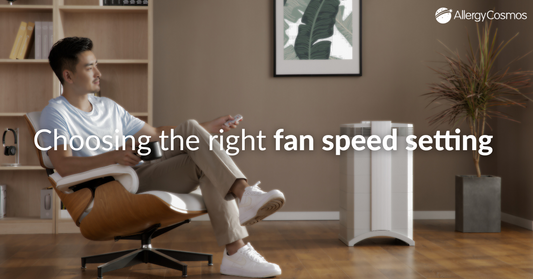Good air quality is important - at home, in the kindergarten, school or in the workplace. However, many manufacturers make claims about their air purifiers that are far from the truth. Therefore, we put together some guidelines as part of our air purifier buying guide for you to consider, so that you know what to look for when buying an air purifier.
High-Efficiency Particulate Air (HEPA) is the keyword these days when it comes to marketing an air purifier. HEPA air purifiers give excellent performance in hospitals, industrial clean rooms and another environment where the airborne hygiene needs are high. But be cautious when a domestic air purifier manufacturer claims that their air purifier removes ‘99.95%’ of airborne pollutants down to 0.3 microns. Often, the removal efficiency will be much lower, such as 80% and sometimes even only 50%. So why the claims of 99.95%? That is because these manufacturers and retailers are giving you only the theoretical efficiency of the filter material itself. There is often a great performance gap between what the manufacturer says and the actual air cleaner performance, because the filter is easily damaged or is not actually a HEPA-rated filter, or there are leaks in the system and not all the air passes through the filter.
Overstating the air cleaners air delivery rates. Depending on the size of the room, you need a certain amount of air per minute to be processed by the air purifier to guarantee a significant reduction in air pollution. Often, the air handling capacity of the motor of the air purifier without filters is stated, rather than the actual airflow rate with the filters installed in the air purifier. With the filters in the air cleaner, the airflow rate would, of course, be much lower - I know that this sounds odd and is cheating. Few manufacturers state this particular performance specification, quoting instead the room size that they want their air purifier to be used in, but not saying how many air changes an hour you can actually expect to achieve.
ULPA versus HEPA air purifiers. Ultra Low Penetration Air (ULPA) technology can remove smaller particles than a HEPA filter, and with greater efficiency. Naturally, this has led some manufacturers to claim that ULPA-based air purifiers are superior. In fact, the ULPA air purifier tends to be less effective than the HEPA air purifier in a typical room. This is because there is a reduction in air flow caused by the denser ULPA filter. Typically, you would get 20-50% less air going through the ULPA filter media than the HEPA filter, resulting in fewer air changes per hour.
Air purifiers with ineffective gas filtration. Gaseous contaminants and odours are a key component of indoor air pollution. Activated carbon is the main technology for the removal of gaseous pollution. In its granular form, it is undoubtedly very effective. But did you know that many air purifiers contain only fibre pads impregnated with activated carbon dust? Carbon dust is not very effective in capturing gases and odours, because it is the granular structure that allows carbon to capture gases and chemicals effectively. It is also impossible for a merely activated carbon filter to remove all gaseous pollutants. You need a special sorbent for formaldehyde and ammonia.
Issues with the air purifiers long-term performance. The real value of an air purifier comes with its air cleaning effectiveness over months and years, not within the first few hours. But filters often suffer from ineffective pre-filtration, which causes them to get clogged up, thereby reducing air flow. If the air purifier has got a granular carbon filter, lack of pre-filtration will quickly lead to a loss of gas absorption potential. Some manufacturers will say you only need to replace your filter every three to five years. If you followed this, then your air purifier would be doing very little to improve air quality. Regular maintenance and filter replacement are needed to keep air purifier performance up.
Expensive, frequent filter replacement. While some air purifiers may be relatively inexpensive, the cost of replacement filters can be quite steep. Lack of effective pre-filters often leads to clogging, requiring replacement more frequently than it needs to be. Some filter cartridges are too small, and reduced capacity means the low capacity for pollutants and increased frequency of replacement. And sometimes several filter stages are combined in one filter cartridge, so all filters have to be replaced, even if only one of them is used up.
One size does not fit all. Look at air purifier model ranges. Do the different systems differ in technology, or only in size? Can one unit really remove pet allergens, mould, tobacco smoke, odours and chemicals? Sometimes a manufacturer will say that use of several filter stages makes their air purifier more versatile. In fact, more filters mean more resistance to air flow and lower air delivery.
The take-home message here is, that you should be careful about the claims made by the manufacturers of air purifiers. Look for independent evidence, genuine customer reviews and test if the retailer really knows what they are talking about when they are recommending air purifiers.




